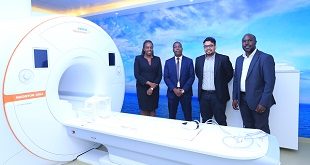The obstacles
Kenya, Tanzania and Uganda were ideal for the study because they have relatively similar administrative and health system structures. They are also high TB burden countries.
The health systems in the study countries vary, and grow in size and services in relation to the population they’re serving. They range from level one (the smallest) through to level five (the largest). For instance, at the village level there are small dispensaries or health centres (level 1) whereas at the city level there are large hospitals (level 5).
To assess the barriers to diagnosis the researchers looked at the implementation of WHO approved molecular diagnostics for TB – Xpert MTB/RIF and Line Probe Assay tests.
They spoke to a range of stakeholders. These included healthcare practitioners, patients, survivors, carers, community leaders, policy makers and implementers. They further inspected the participating healthcare centres to ascertain the existence of facilities referred to by practitioners in the interview.
Health officers representing 190 districts/counties participated in the survey across Kenya, Tanzania and Uganda. The survey findings were corroborated by 145 healthcare facility (HCF) audits and 11 policy-maker engagement workshops.
In Uganda, regions were based on areas represented by a regional hospital while districts were taken as they are currently structured as administration units. In Tanzania, regions and districts are clearly demarcated administrative units and so were covered as such. For Kenya, regional units were counties while the subcounties were equivalent to districts in Uganda and Tanzania.
Participants were healthcare administrators such as regional/county and district health (medical) officers, HCF managers and healthcare professionals of participating HCFs. Apart from managers and practitioners, patients, TB survivors, community health volunteers, opinions leaders among the HCF users, local council leaders and national policy-makers in ministry of Health and parliament were engaged.
In all the countries, government was the main TB clinical service provider, owning over 80% of the HCFs. Level 5 hospitals (national, consultant level, regional referral) were 42, level 4 (regional hospitals) 34, level 3 (district hospitals) 57, level 2 (health centre IV) 6 and level 1 (dispensary, health centre 1–3) 6. The majority, 86 of the TB laboratories were able to deliver biosafety level II (BSL II) followed by BSL I, 23 and BSL III, 6 and 4 general laboratories.
At the time of the survey, smear microscopy was the most available diagnostic tool use in 185 out 190 districts/counties surveyed, followed by clinical diagnosis used in 128 of 190. The Xpert MTB RIF lagged and was used in 125 of 190. The TB culture and LPA were the least used in just 13 of 190.
At country level, Xpert MTB/RIF test coverage was 74% and 39% districts in Uganda and Tanzania respectively and 42% subcounties in Kenya.
The main barriers we found were: Under financing by government, lack of awareness, shortage of water and electricity, inadequate human resource, and procurement difficulties.
Under financing by government was the main factor underlying low uptake or absence of molecular diagnostics at healthcare facilities. Lack of money means healthcare centres cannot buy laboratory equipment and supplies, pay for utilities, hire and retain qualified staff.
The second biggest factor was a lack of awareness. For instance, 33% of healthcare administrators and 49% of practitioners were unaware of Line Probe Assay as TB diagnostic. Only 33% of the 111 health care facilities we examined used the Xpert MTB/RIF test to its full capacity of performing 8 or more tests per day.
A shortage of water and electricity was a major obstacle because water is used to dissolve substances (a solvent) and is a cleaning agent. Without water most laboratory operations are compromised. Without electricity, the testing machines cannot operate.
Inadequate human resource led to work overload and patient samples going untested because there weren’t enough people to run the tests. One healthcare facility reported going six months without giving the Xpert MTB/RIF test because the person in charge was “off sick”.
Procurement difficulties resulted in the failure to acquire supplies in time. This was a cause of laboratory reagent stock outs and hence under-utilisation of molecular testing facilities.
 The Independent Uganda: You get the Truth we Pay the Price
The Independent Uganda: You get the Truth we Pay the Price


